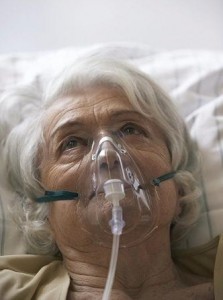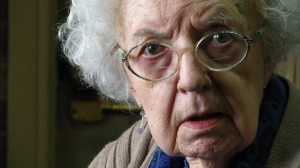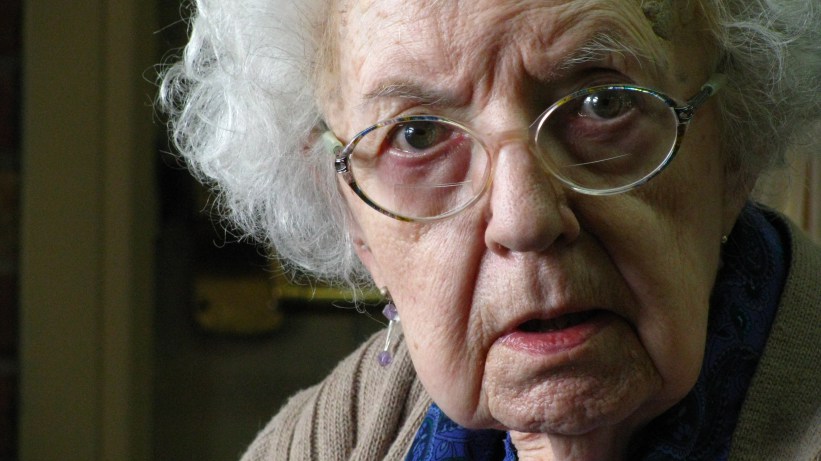
Last week, I wrote about how it is that we really have very little to say in the matter when the decisions are made about taking our aging loved one to a nursing or rehabilitation center when they have a serious health issue arise.
In fact, there’s plenty we can say and do, it’s really about knowing in advance that you have plenty of choices, that you could and should ask many questions and offer input into the healthcare decisions of your loved one. Unfortunately for most of us, these decisions are made when both our loved one and we, as caregivers and family members, are completely depleted – physically, mentally and emotionally.
At the conclusion of the last segment, we had arrived at the “Health & RehabilitationCenter” and Mom had been admitted. Let’s revisit the “Rehab” and see how Mom’s getting along shall we?
So let’s say, a week has passed. In that time, the staff of the nursing home – nurses, social workers, recreation/activities, physical, occupation and speech/language therapists, (pt, ot, slt) nutritionist or dietary and so on – have all had a chance to do their part on a “baseline” assessment which is done for each and every patient who goes to a Medicare/Medicaid qualified nursing facility (that would be most, not all, there are a very few exceptions). This is called the “MDS” assessment or “Minimum Data Set.” Medicare and Medicaid keep careful track of every patient and it is from these assessments that
a) Billing is done for Medicaid
b) “Quality Measures” are assessed by Medicare.
The first is pretty obvious – Medicaid pays for certain things at certain rates and MDS codes tell them what to reimburse.
The second might seem a bit more mysterious until you understand that nursing home staff are required to continuously update their assessments so that changes are documented for every resident at regular intervals. For instance, if a patient arrives and on their initial MDS assessment, they report no pressure ulcers (bed sores) and 90 days later, the same resident now has bed sores, there has been an decline in the quality of care. If patients report chronic pain and classify it as a “number 2” on a scale of 1-10, but it gets worse, say the patient later takes a stronger painkiller and self-reports his pain is now a “5” – that too is reported. Things like Urinary Tract Infections (UTI), occurrences of Depression and other things are also carefully monitored. This set of statistics forms a picture of the “quality” of the care patients are receiving at any given facility.
This information is also readily available, to the public, online – for free! You can access it by using the 5-Star Quality Rating System provided by the Center for Medicare/caid Services (CMS). There’s a very readable set of documentation available on what it is and how best to use the system (click on the link). You can search for data on a particular facility or compare several facilities at the Five Star Rating System. (click on the link). You can also see reports on staffing levels and recent inspection reports (“surveys” in nursing care parlance) including the actual reports of problems as cited by the surveyors.
So your Mom has now been “MDS” assessed and from that a “Care Plan” has been designed in conjunction with her care team. First up at bat are likely to be the PT/OT/ST team who will try to get Mom into as much therapy as possible. She will have been assessed and orders written by her physician to try to get Mom to the “least restrictive alternative” for her care – that means discharged home, discharged to another facility such as an Assisted Living or to a “unskilled” nursing facility.
Lets say Mom has had a stroke and is “hemispherically” (one side, lets say left) impaired. She has trouble walking, talking, seeing, swallowing and doing most everything that engages her motor system on the left side. She also suffers from some “aphasia” – that’s a condition where, due to the damage caused by a stroke (in this case) the person may make mistakes in the words they use, or perhaps using the wrong sounds in a word, choosing the wrong word altogether, or putting words together incorrectly. Its a problem not of motor skill, but of the brain’s ability to handle language and communication. Your mom’s case is not bad and the SLT thinks they can correct it with some intensive therapy.
So your mother’s days are full up with intensive therapy to help her physically – to strengthen the weakened and impaired left side, and to work on balance; in Occupational Therapy – to help her figure out new ways to do tasks that she used to do without a thought: putting on her socks & shoes, getting things down from the pantry shelf, dressing, bathing and getting on and off the toilet by herself. Then hours of very intensive therapy to improve her swallowing and language. At the end of each day she is exhausted and discouraged. When you come to visit at dinner time she is depressed and irritable. She hates the semi-liquid food she’s given because of her impared with swallowing. Her roommate (she can’t afford the upcharges for a private room) watches TV all day and all night at full volume and with the lights on. When she finally does fall asleep, she is awakened by the constant noise from the nurses station down the hall or someone coming to draw blood or check on her roommate. You try to cheer her up by reminding her “its only temporary Mom, you’ll be going home soon.”

Won’t she?
Well she has 100 day right? That’s what the hospital caseworker said, “Medicare will pay for Rehab for up to 100 days.” Yes, that’s what they said. Note that it is “up to” 100 days. And she didn’t say that Medicare would pay for ALL the charges. Indeed, right around day 20 you will start hearing the Administration of the facility start making noises about “discharge planning.” What? Mom is ready to come home? Well, not exactly. They don’t necessarily mean discharging Mom home. They mean discharge from therapy, or more accurately, discharge from “Skilled Nursing.” Again you say, “what?!”
There’s a fly in the Medicare ointment. And it has little to do with your mom. It has to do with Medicare’s reimbursement schedule. What they actually pay – at 100% reimbursement – is the first 20 days of rehab. After days 1-20, you pay a co-pay (depending on whether you have traditional Medicare, or an Advantage plan – all of these are moving targets, but basically it comes out in the end). On days 21-100 you’ll pay $144.50 “co-pay” each day and Medicare picks up the rest.
(By the way, if you find yourself in the hospital in advance of such a situation, one critical question to ask is if you’ve been “admitted” to the hospital as an inpatient. Well of course you were admitted! You were there for 4 days! Except, today, hospitals routinely bring patients in on “observation” and in fact, unbeknownst to most, they are not admitted as inpatients. To go from a hospital to a skilled nursing, or rehab facility and have Medicare pay for it, you must have been admitted for a three inpatient day stay, not including the day you leave. What if you were on ‘observation’ on day one, stayed two more days as an inpatient and left on the fourth? No, Medicare won’t pay for your rehab because you only had a two day inpatient hospital stay. Sneaky huh?)
Most nursing facilities know perfectly well that most of us can’t afford to self pay from our own pockets for rehab. So, ready or not, they’ll begin making noises about “de-certifying” Mom from rehab because they don’t believe she can pay. Will they ask you about it? No. If there’s no second payor insurance (e.g. a private or supplemental policy that picks up where Medicare leaves off) they will start making noises such as, “your mom is no longer getting better” or “your mom doesn’t seem to be motivated in her therapy anymore” and the next thing you know you’re either frantically making plans to put mom elsewhere – your house, an assisted living, home with a home health agency coming in – or heaving a huge sigh of relief when the social worker at the “Health and Rehab” Facility offers you the option of simply moving mom to an “unskilled bed.” There she’ll be taken care just as she has been all along (for better or worse!) but without all the pressures to participate in therapy to get her back on her feet. Indeed – she might be very hard pressed to get any therapy at all. Often we hear about “restorative therapy” that is meant to keep residents from losing whatever physical gains they’ve made. (notice they are now “residents,” no longer “patients”). Generally, that will consist of a Certified Nursing Assistant (CNA) walking with a resident and perhaps doing some mobility work with them (manipulating arms in legs in bed or shower).
Mom has now gone from a temporary “Health and Rehabilitation” patient, to a full-time, long term care resident. And if you think she was unhappy before, wait until you see what starts happening next!
Tune in next week, same time, same place….. for Part III – “Choosing” a Nursing Home
